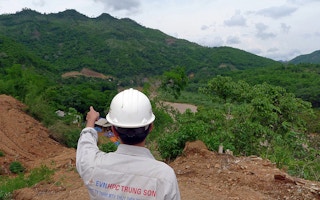The International Finance Corporation (IFC), a member of the World Bank Group, and Singapore-based renewable energy private equity fund Armstrong S.E. Clean Energy Fund have become the latest investors supporting Vietnam’s hydropower sector.
The investment partnership was announced last month, with IFC taking 16 per cent and Armstrong taking 20 per cent equity stake in Ho Chi Minh City-based Gia Lai Electricity Joint Stock Company (GEC).
This is the first time both investors are channelling funds into Vietnam’s renewable power sector, a move which could boost foreign investor confidence in the country’s hydropower and renewable energy potential.
GEC chief executive Le An Khang welcomed the support by IFC and Armstrong, saying it would enable the company to expand its core business in hydropower, and also help cement GEC’s position as Vietnam’s leading renewable energy company.
“Their investment is a vote of confidence in Vietnam’s hydropower sector potential and should help attract more international investors,” he said.
Khang is also looking forward to GEC’s increased capability to provide sustainable alternatives to fossil-fuel based power generation in Vietnam.
GEC is one of the largest private sector hydropower players in Vietnam. Currently, the company produces 84.4 MW of installed power capacity from 15 run-off-the-river small-scale hydro power plants situated in Pleiku, in the Central Highlands of Vietnam.
Vietnam’s electricity consumption has outpaced the country’s economic growth by twofold. The country’s power demand is estimated to increase by 10 per cent annually.
“
Their investment is a vote of confidence in Vietnam’s hydropower sector potential and should help attract more international investors.
Le An Khang, CEO, Gia Lai Electricity Joint Stock Company (GEC)
With IFC and Armstrong’s investment into GEC, the company is hoping to help the government meet its target of a 14 per cent annual increase in installed power capacity between 2015 and 2030, diversify its energy mix and reduce its dependence on imported fossil fuels.
As new shareholders, IFC and Armstrong will help GEC expand its hydropower business as well as explore potentials in solar and wind.
“We believe GEC is well positioned to capture the strong growth potential in Vietnam’s renewable energy sector,” said Armstrong’s managing partner Andrew Affleck.
“Armstrong’s aim is to share the knowledge and experience we have gained from developing and constructing multiple renewable projects in neighbouring Southeast Asian markets to help GEC to continue to build a leading position in Vietnam,” he said.
IFC’s Hyun Chan Ho, who is the Asia Pacific head for infrastructure and natural resources, said foreign investment into Vietnam’s renewable energy sector is still modest.
He hopes that IFC’s move will boost foreign investor confidence in the country’s abundant yet untapped renewable energy generation potential.
“IFC’s global industry knowledge will help transform GEC into a role model for other emerging renewable energy players in Vietnam by showcasing industry best practices, while at the same time expanding supply of reliable and clean energy,” he said.
Hydropower is the world’s largest source of renewable energy, and accounts for one-fifth of the world’s electricity supply from all sources, according to statistics by IFC.
Over the last decade, IFC has invested more than $1 billion in 75 hydropower projects in 25 countries to promote the responsible way of harnessing clean hydropower.
Armstrong has over 50 renewable energy projects globally, with 92 MW currently operational and 300 MW projects being developed.

















